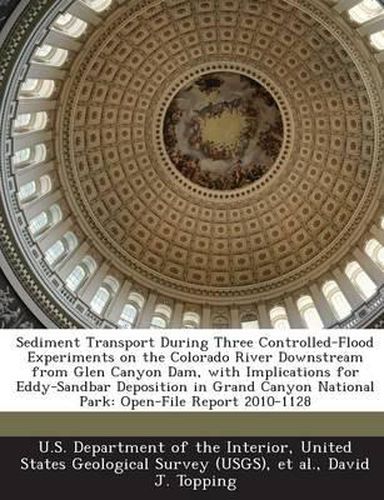Readings Newsletter
Become a Readings Member to make your shopping experience even easier.
Sign in or sign up for free!
You’re not far away from qualifying for FREE standard shipping within Australia
You’ve qualified for FREE standard shipping within Australia
The cart is loading…






Three large-scale field experiments were conducted on the Colorado River downstream from Glen Canyon Dam in 1996, 2004, and 2008 to evaluate whether artificial (that is, controlled) floods released from the dam could be used in conjunction with the sand supplied by downstream tributaries to rebuild and sustainably maintain eddy sandbars in the river in Grand Canyon National Park. Higher suspended-sand concentrations during a controlled flood will lead to greater eddy-sandbar deposition rates. During each controlled flood experiment, sediment-transport and bed-sediment data were collected to evaluate sediment-supply effects on sandbar deposition. Data collection substantially increased in spatial and temporal density with each subsequent experiment. The suspended- and bed-sediment data collected during all three controlled-flood experiments are presented and analyzed in this report. Analysis of these data indicate that in designing the hydrograph of a controlled flood that is optimized for sandbar deposition in a given reach of the Colorado River, both the magnitude and the grain size of the sand supply must be considered. Because of the opposing physical effects of bed-sand area and bed-sand grain size in regulating suspended-sand concentration, larger amounts of coarser sand on the bed can lead to lower suspended-sand concentrations, and thus lower rates of sandbar deposition, during a controlled flood than can lesser amounts of finer sand on the bed. Although suspended-sand concentrations were higher at all study sites during the 2008 controlled-flood experiment (CFE) than during either the 1996 or 2004 CFEs, these higher concentrations were likely associated with more sand on the bed of the Colorado River in only lower Glen Canyon. More sand was likely present on the bed of the river in Grand Canyon during the 1996 CFE than during either the 2004 or 2008 CFEs. The question still remains as to whether sandbars can be sustained in the Colorado River in Grand Canyo
$9.00 standard shipping within Australia
FREE standard shipping within Australia for orders over $100.00
Express & International shipping calculated at checkout
Three large-scale field experiments were conducted on the Colorado River downstream from Glen Canyon Dam in 1996, 2004, and 2008 to evaluate whether artificial (that is, controlled) floods released from the dam could be used in conjunction with the sand supplied by downstream tributaries to rebuild and sustainably maintain eddy sandbars in the river in Grand Canyon National Park. Higher suspended-sand concentrations during a controlled flood will lead to greater eddy-sandbar deposition rates. During each controlled flood experiment, sediment-transport and bed-sediment data were collected to evaluate sediment-supply effects on sandbar deposition. Data collection substantially increased in spatial and temporal density with each subsequent experiment. The suspended- and bed-sediment data collected during all three controlled-flood experiments are presented and analyzed in this report. Analysis of these data indicate that in designing the hydrograph of a controlled flood that is optimized for sandbar deposition in a given reach of the Colorado River, both the magnitude and the grain size of the sand supply must be considered. Because of the opposing physical effects of bed-sand area and bed-sand grain size in regulating suspended-sand concentration, larger amounts of coarser sand on the bed can lead to lower suspended-sand concentrations, and thus lower rates of sandbar deposition, during a controlled flood than can lesser amounts of finer sand on the bed. Although suspended-sand concentrations were higher at all study sites during the 2008 controlled-flood experiment (CFE) than during either the 1996 or 2004 CFEs, these higher concentrations were likely associated with more sand on the bed of the Colorado River in only lower Glen Canyon. More sand was likely present on the bed of the river in Grand Canyon during the 1996 CFE than during either the 2004 or 2008 CFEs. The question still remains as to whether sandbars can be sustained in the Colorado River in Grand Canyo